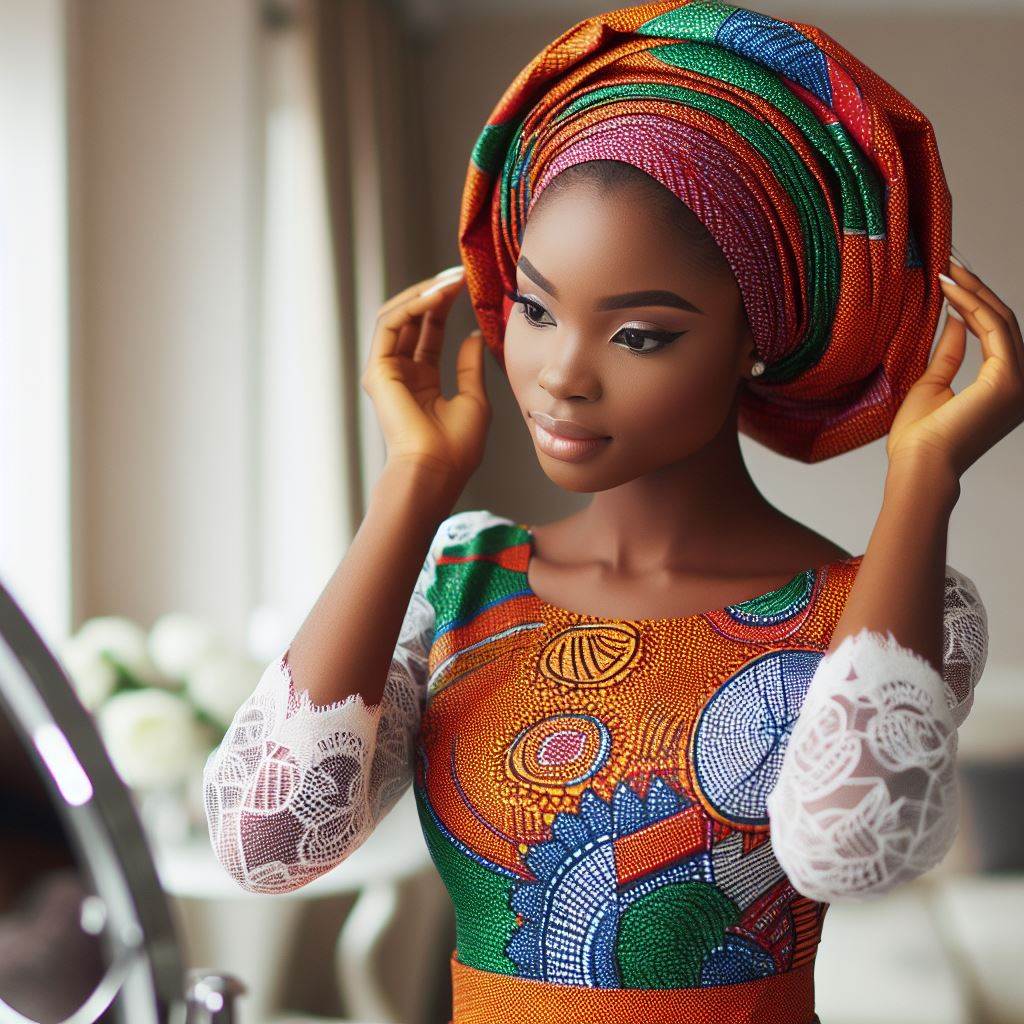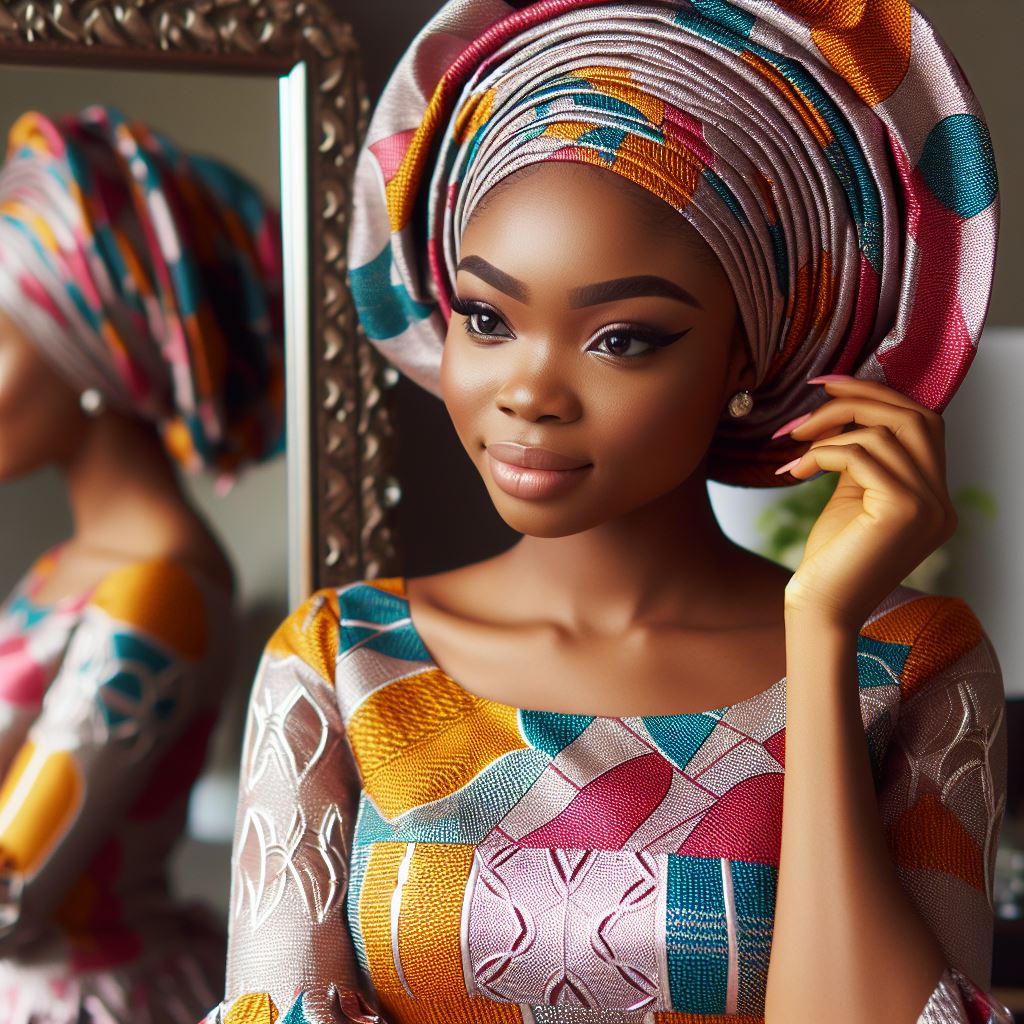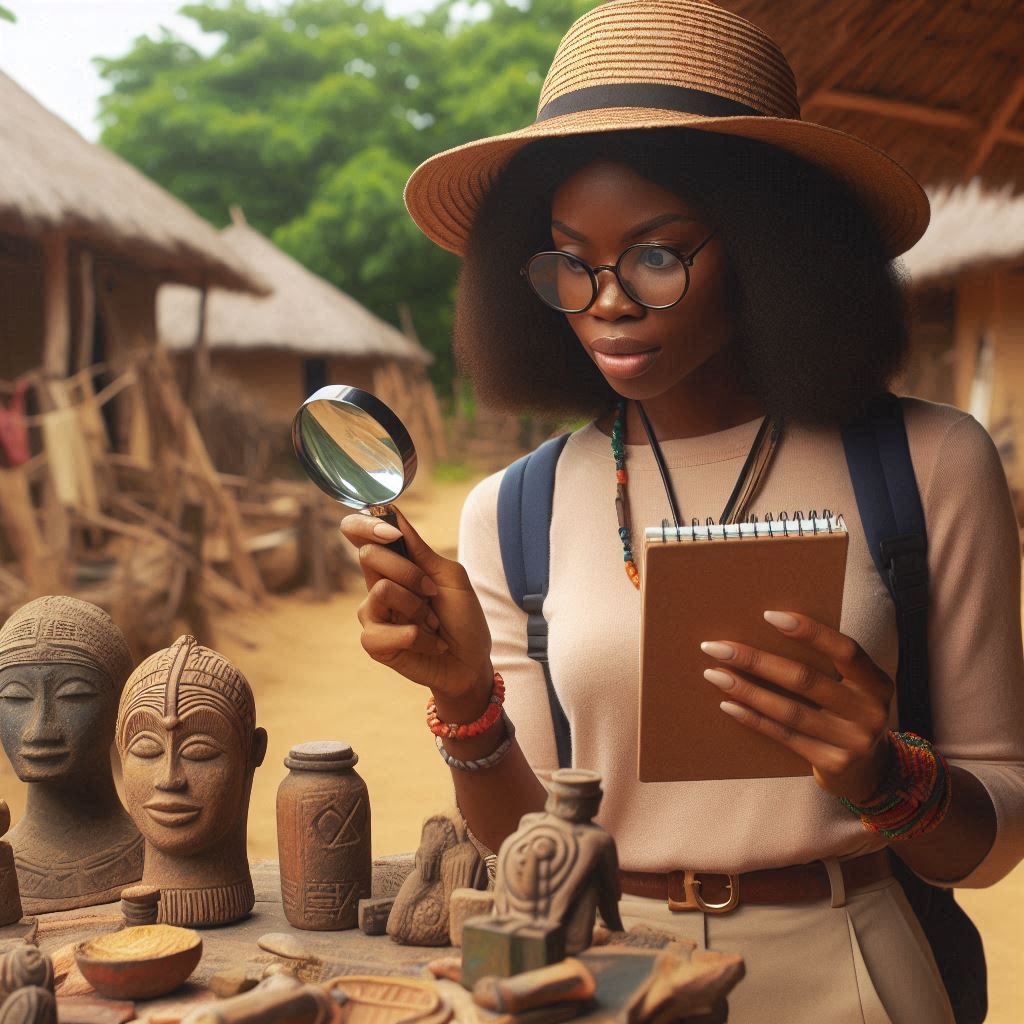Introduction
Creating unique fashion designs in Nigeria requires originality and creativity.
In a vibrant industry, standing out is crucial.
Nigerian fashion designers are known for their innovative and distinct styles.
Their work often reflects the country’s rich cultural heritage.
To succeed, designers must blend tradition with modern trends.
Originality sets designers apart in a competitive market. Creativity drives innovation and keeps the industry dynamic.
By embracing their unique perspectives, Nigerian designers can create unforgettable fashion pieces.
They should experiment with various materials, colors, and patterns.
Utilizing local fabrics and techniques adds authenticity to their designs.
Collaboration with artisans can enhance creativity and craftsmanship.
Attending fashion shows and networking events helps designers stay updated on trends.
Continuous learning and experimentation are key to success.
In summary, originality and creativity are vital for Nigerian fashion designers to create unique, impactful designs.
Research and Inspiration
The Importance of Research in Creating Unique Fashion Designs
Research is the bedrock of innovation in fashion design. It involves exploring diverse sources of information to gain insights into trends, consumer preferences, cultural influences, and historical references.
By conducting thorough research, designers can uncover hidden gems of inspiration, identify gaps in the market, and discover innovative techniques and materials that can elevate their designs.
Sources of Inspiration Such as Nigerian Culture, History, and Trends
Nigeria’s rich cultural tapestry, steeped in history and tradition, serves as a fertile ground for inspiration in fashion design.
From the vibrant colors and intricate patterns of traditional textiles to the architectural marvels and artistic expressions found across the country, there is no shortage of sources to draw from.
By delving into Nigerian culture, designers can infuse their creations with authenticity and celebrate the unique heritage of the nation.
Moreover, staying attuned to contemporary trends in Nigerian fashion is essential for designers seeking to create designs that resonate with the current zeitgeist.
Whether it’s the rise of Afrocentric styles, the fusion of traditional and modern elements, or the exploration of sustainable fashion practices, keeping abreast of trends allows designers to stay relevant and capture the imaginations of their audience.
Encourage Aspiring Designers to Study Fashion Design Techniques and Trends
For aspiring designers, studying fashion design techniques and trends is paramount to their success in the industry.
Formal education in fashion design provides a solid foundation in garment construction, patternmaking, draping, and other essential skills.
Additionally, aspiring designers can benefit from mentorship programs, internships, and workshops conducted by industry professionals to gain practical experience and insights into the workings of the fashion industry.
Furthermore, staying informed about emerging trends and innovations in fashion is crucial for aspiring designers to stay ahead of the curve and carve out their niche in the competitive landscape.
By attending fashion shows, exhibitions, and networking events, aspiring designers can expand their knowledge, build valuable connections, and gain exposure to diverse perspectives and ideas.
Basically, research and inspiration are integral components of the creative process in fashion design.
By embracing the richness of Nigerian culture, history, and contemporary trends, aspiring designers can create designs that are not only unique and innovative but also reflective of the cultural heritage and identity of the nation.
Through continuous learning and exploration, aspiring designers can cultivate their talents, refine their skills, and make their mark in the dynamic world of fashion design in Nigeria.
Read: How to Apply for Communication Arts Programs
Developing a Unique Design Concept
When it comes to creating unique fashion designs in Nigeria, developing a cohesive design concept is crucial. Here are some key points to consider:
The Process of Developing a Cohesive Design Concept
- Start by researching current trends in Nigerian fashion to understand the market.
- Brainstorm ideas that reflect your personal style and vision for the collection.
- Create mood boards to visually map out your design inspirations.
- Sketch initial designs, focusing on silhouette, details, and overall aesthetic.
- Refine your sketches based on feedback and your own creative vision.
The Importance of Storytelling and Personal Expression in Design
- Infuse your designs with personal stories, cultural influences, or social commentary.
- Use fashion as a medium to express your unique perspective and values.
- Create pieces that evoke emotions and tell a compelling narrative.
Experimenting with Different Materials, Textures, and Colors
- Explore local Nigerian fabrics such as Ankara, Aso-oke, and Adire for a distinctive touch.
- Mix and match textures like lace, chiffon, and leather to add depth to your designs.
- Play with unexpected color combinations to create visual interest and stand out.
- Don’t be afraid to push boundaries and try unconventional materials for a fresh take on fashion.
Overall, developing a unique design concept requires creativity, experimentation, and a deep connection to your own artistic vision.
By telling stories, expressing yourself authentically, and playing with different materials, textures, and colors, you can create fashion designs that truly stand out in the vibrant Nigerian fashion scene.
Read: Introduction to African and Asian Studies in Nigeria
Sketching and Designing
- Highlight the importance of sketching and designing to bring the design concept to life.
- Discuss the tools and techniques used in fashion design sketching.
- Encourage designers to iterate on their designs and seek feedback from peers.
The importance of sketching and designing to bring the design concept to life
Sketching and designing are crucial steps in the fashion design process as they bring the designer’s vision to life. Without sketching, it would be challenging to communicate and visualize the concept effectively.
When it comes to sketching, designers use various tools such as pencils, markers, and tablets to create their designs. These tools help in detailing the design, from the silhouette to the intricate patterns and embellishments.
The tools and techniques used in fashion design sketching
Techniques like croquis sketching, where a standard figure template is used as a base for clothing design, are commonly employed in fashion design sketching. This allows designers to focus on the garment’s details without worrying about proportions.
It is essential for designers to iterate on their designs, making revisions and improvements along the way. Seeking feedback from peers or mentors can provide valuable insights and help in refining the design further.
Moreover, sketching and designing allow designers to experiment with different styles, colors, and textures before finalizing the design. This flexibility in the creative process can lead to unique and innovative fashion designs that stand out in the industry.
Read: Digital Media Trends in Communication Arts

Fabric Selection and Production
When it comes to creating unique fashion designs in Nigeria, fabric selection and production play a crucial role in bringing a designer’s vision to life.
The type of fabric chosen can greatly impact the overall look and feel of the design, making it essential for designers to carefully consider their options.
In this section, we will discuss the importance of fabric selection and production, explore different types of fabrics commonly used in Nigerian fashion, and highlight the significance of quality production and attention to detail in creating one-of-a-kind designs.
Fabric Selection in Creating Unique Fashion Designs
- Choose fabrics that complement the design aesthetic and concept.
- Consider the texture, weight, and drape of the fabric.
- Experiment with different fabrics to create unique and innovative designs.
- Take into account cultural influences and traditional Nigerian textiles.
Types of Fabrics Commonly Used in Nigerian Fashion
- Ankara: vibrant and colorful wax print fabric that is popular in Nigerian fashion.
- Aso Oke: handwoven cloth traditionally used for special occasions and ceremonies.
- Lace: delicate and intricate fabric often used for elegant and formal wear.
- Silk: a luxurious fabric known for its smooth texture and lustrous sheen.
Importance of Quality Production and Attention to Detail
- Quality production ensures that the design is executed with precision and skill.
- Attention to detail can elevate a design and make it stand out from the rest.
- Paying close attention to craftsmanship and finishing touches is essential.
- Quality production and attention to detail can enhance the overall appeal of the design.
Essentially, fabric selection and production are essential components of creating unique fashion designs in Nigeria.
By carefully choosing the right fabrics, experimenting with different textures, and paying attention to quality production and detail, designers can bring their creative vision to life and produce truly exceptional pieces that showcase the rich cultural heritage of Nigerian fashion.
Read: Impact of Communication Arts on Nigerian Media
See Related Content: Cultural Heritage and Its Study in Nigerian Universities
Collaboration and Networking
The Benefits of Collaborating with Other Designers, Artisans, and Craftsmen
Collaboration sparks creativity, bringing together diverse talents to create something greater than the sum of its parts.
By collaborating with other designers, artisans, and craftsmen, fashion designers can tap into a wealth of expertise, resources, and perspectives.
Whether it’s partnering with a skilled tailor to bring intricate designs to life or collaborating with a jewelry artisan to accessorize a collection, working collaboratively opens doors to new possibilities and expands the creative horizons of designers.
Encourage Designers to Participate in Fashion Events, Workshops, and Exhibitions to Network and Gain Exposure
Participating in fashion events, workshops, and exhibitions provides invaluable opportunities for designers to network, showcase their work, and gain exposure.
Networking allows designers to forge meaningful connections with industry professionals, potential collaborators, and mentors.
It opens doors to new opportunities, collaborations, and partnerships that can propel a designer’s career forward.
Additionally, showcasing designs at exhibitions and fashion shows provides exposure to a wider audience, increasing brand visibility and attracting potential clients and buyers.
The Importance of Building a Strong Support System Within the Fashion Industry
Building a strong support system within the fashion industry is essential for designers to navigate the challenges and opportunities of the industry.
Surrounding oneself with like-minded individuals, mentors, and supporters provides emotional support, encouragement, and valuable feedback.
A strong support system offers a safety net during times of uncertainty, celebrates successes, and provides guidance and mentorship to help designers grow and thrive in their careers.
Whether it’s joining a designer collective, attending industry networking events, or seeking out mentorship opportunities, cultivating relationships within the fashion community fosters a sense of belonging and solidarity that is essential for success.
In closing, collaboration and networking are essential elements in fostering creativity and success in Nigerian fashion design.
By embracing collaboration, participating in industry events, and building a strong support system, designers can tap into a wealth of resources, opportunities, and expertise that will help them realize their creative vision and achieve their goals in the dynamic world of fashion.
Read: Language Arts Courses: What to Expect in Nigeria
See Related Content: Mass Communication and Public Relations Nigeria
You Might Also Like: Challenges Faced by Foreign Language Students in Nigeria
Learn More: Understanding German Language Popularity in Nigeria
See Related Content: Key Theorists in African and Asian Studies
Marketing and Branding
When it comes to marketing and branding unique fashion designs in Nigeria, designers need to be strategic in their approach. Here are some key strategies:
Social Media Presence
- Utilize platforms like Instagram, Facebook, and Twitter to showcase your designs to a global audience.
- Engage with followers, collaborate with influencers, and use hashtags to reach a wider demographic.
- Regularly post high-quality images and videos of your creations to keep your audience engaged and interested.
E-Commerce Platforms
- List your designs on popular e-commerce sites like Jumia and Konga to expand your reach beyond physical stores.
- Offer online exclusives, discounts, and promotions to attract customers and drive sales through these platforms.
- Provide detailed product descriptions, sizing charts, and easy payment options to enhance the online shopping experience.
Fashion Shows and Events
- Participate in local and international fashion shows to gain exposure and establish relationships with industry professionals.
- Showcase your unique designs on the runway to generate buzz and create a buzz around your brand.
- Network with buyers, journalists, and influencers at these events to secure partnerships and collaborations.
Brand Identity
- Define your brand’s unique selling proposition (USP) and communicate it consistently across all marketing channels.
- Create a memorable logo, color scheme, and visual identity that reflects the essence of your brand.
- Craft a compelling brand story and mission statement to connect with customers on an emotional level.
Connecting with Target Audience
- Conduct market research to understand the needs, preferences, and behaviors of your target audience.
- Create personalized marketing campaigns that resonate with your audience’s values and aspirations.
- Engage with customers through feedback surveys, email newsletters, and social media polls to build loyalty and trust.
By implementing these marketing and branding strategies, Nigerian fashion designers can elevate their unique designs to new heights and establish a strong presence in the competitive fashion industry.
See Related Content: Study Abroad Programs for Nigerian Language Students
Uncover the Details: Internships for Communication Studies Majors in Nigeria
You Might Also Like: Role of Technology in Security Studies in Nigeria
Conclusion
In this blog post, we’ve explored the multifaceted journey of creating unique fashion designs in Nigeria.
From the importance of research and drawing inspiration from Nigerian culture, history, and trends to the benefits of collaboration and networking within the fashion industry, aspiring designers have a plethora of tools at their disposal to unleash their creativity and make their mark in the industry.
By delving into the rich tapestry of Nigerian culture and history, designers can infuse their creations with authenticity and depth, captivating audiences with their unique narratives.
Moreover, collaboration with fellow designers, artisans, and craftsmen opens doors to new perspectives and creative synergies, fostering innovation and pushing the boundaries of conventional fashion.
Participating in fashion events, workshops, and exhibitions not only provides aspiring designers with invaluable networking opportunities but also allows them to showcase their talents and gain exposure to a wider audience.
It’s through these interactions and experiences that aspiring designers can forge meaningful connections, build a strong support system, and pave their way towards success in the dynamic world of Nigerian fashion design.




